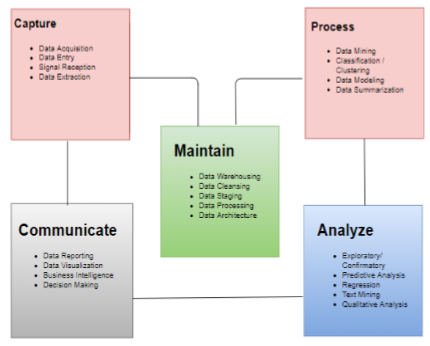SARS-CoV-2 Future Forecasting Using Multi-Linear Regression Model
Keywords:
Linear Regression, LASSO, Support Vector Machine(SVM), Random Forest, Exponential Smoothing, Regression TreeAbstract
The 2019 pandemic in Wuhan, China caused a devastating global outbreak of the Coronavirus Disease (SARSCoV-2). Machine
learning offers a number of prediction models for future events that are based on training and testing, including conventional machine
learning and Deep Learning. This study shows that machine-learning models can anticipate the number of future SARS-CoV-2 patients
that are currently seen as a possible risk to the human race. Supervised machine learning models like linear regression, vector support and
regression tree are used for prediction. Data on the total cases and recovery cases are based on two types of predictions: new infections and
recovery situations. The machine-learning regression model is used to generate the outcome. In this paper, we present prediction of future
forecasting of Covid cases based on current situation by applying dataset of before and after pre-trial vaccine.
Downloads
References
Rustam et al., “COVID-19 Future Forecasting Using Supervised Machine Learning Models,” IEEE Access, vol. 8, pp. 101489–101499, 2020, doi: 10.1109/ACCESS.2020.2997311.
F. Ardabili et al., “COVID-19 Outbreak Prediction with Machine Learning,” SSRN Electron. J., 2020, doi: 10.2139/ssrn.3580188.
Iwendi et al., “COVID-19 patient health prediction using boosted random forest algorithm,” Front. Public Heal., vol. 8, no. July, pp. 1–9, 2020, doi: 10.3389/fpubh.2020.00357.
Sujath, J. M. Chatterjee, and A. E. Hassanien, “A machine learning forecasting model for COVID-19 pandemic in India,” Stoch. Environ. Res. Risk Assess., vol. 34, no. 7, pp. 959– 972, 2020, doi: 10.1007/s00477-020-01827-8.
R. Shinde, A. B. Kalamkar, P. N. Mahalle, N. Dey, J. Chaki, and A. E. Hassanien, “Forecasting Models for Coronavirus Disease (COVID-19): A Survey of the State-of-the-Art,” SN Comput. Sci., vol. 1, no. 4, pp. 1–15, 2020, doi: 10.1007/s42979-020-00209-9.
Pinter, I. Felde, A. Mosavi, P. Ghamisi, and R. Gloaguen, “COVID-19 Pandemic Prediction for Hungary; A Hybrid Machine Learning Approach,” SSRN Electron. J., 2020, doi: 10.2139/ssrn.3590821.
Dhamodharavadhani, R. Rathipriya, and J. M. Chatterjee, “COVID-19 Mortality Rate Prediction for India Using Statistical Neural Network Models,” Front. Public Heal., vol. 8, no. August, pp. 1–12, 2020, doi: 10.3389/fpubh.2020.00441.
M. Jain, “Pandemic in India,” no. Icces, pp. 784–789, 2020.
I. Alzahrani, I. A. Aljamaan, and E. A. Al-Fakih, “Forecasting the spread of the COVID 19 pandemic in Saudi Arabia using ARIMA prediction model under current public health interventions,” J. Infect. Public Health, vol. 13, no. 7, pp. 914–919, 2020, doi: 10.1016/j.jiph.2020.06.001.
Alboaneen, B. Pranggono, D. Alshammari, N. Alqahtani, and R. Alyaffer, “Predicting the epidemiological outbreak of the coronavirus disease 2019 (COVID-19) in Saudi Arabia,” Int. J. Environ. Res. Public Health, vol. 17, no. 12, pp. 1–10, 2020, doi: 10.3390/ijerph17124568.
Mishra et al., “Trajectory of COVID-19 Data in India: Investigation and Project Using Artificial Neural Network, Fuzzy Time Series and ARIMA Models,” Annu. Res. Rev. Biol., vol. 35, no. 9, pp. 46–54, 2020, doi: 10.9734/arrb/2020/v35i930270.Covid-19 Future Forecasting using Supervised Multi-linear Regression 50
Angurala, M. Bala, S. S. Bamber, R. Kaur, and P. Singh, “An internet of things assisted drone based approach to reduce rapid spread of COVID-19,” J. Saf. Sci. Resil., vol. 1, no. 1, pp. 31–35, 2020, doi: 10.1016/j.jnlssr.2020.06.011.
M. Khan and R. Gupta, “ARIMA and NAR based prediction model for time series analysis of COVID-19 cases in India,” J. Saf. Sci. Resil., vol. 1, no. 1, pp. 12–18, 2020, doi: 10.1016/j.jnlssr.2020.06.007.
Khan, A. Saeed, and S. Ali, “Modelling and forecasting of new cases, deaths and recover cases of COVID-19 by using Vector Autoregressive model in Pakistan,” Chaos, Solitons and Fractals, vol. 140, p. 110189, 2020, doi: 10.1016/j.chaos.2020.110189.
Farooq and M. A. Bazaz, “A novel adaptive deep learning model of Covid-19 with focus on mortality reduction strategies,” Chaos, Solitons and Fractals, vol. 138, 2020, doi: 10.1016/j.chaos.2020.110148.
Singh, P. Raj, R. Kumar, and R. Chaujar, “Prediction and forecast for COVID-19 Outbreak in India based on Enhanced Epidemiological Models,” Proc. 2nd Int. Conf. Inven. Res. Comput. Appl. ICIRCA 2020, pp. 93–97, 2020, doi: 10.1109/ICIRCA48905.2020.9183126.
Wieczorek, J. Siłka, and M. Woźniak, “Neural network powered COVID-19 spread forecasting model,” Chaos, Solitons and Fractals, vol. 140, 2020, doi: 10.1016/j.chaos.2020.110203.
Salgotra, M. Gandomi, and A. H. Gandomi, “Time Series Analysis and Forecast of the COVID-19 Pandemic in India using Genetic Programming,” Chaos, Solitons and Fractals, vol. 138, 2020, doi: 10.1016/j.chaos.2020.109945.
Johns Hopkins University Data Repository. Cssegisanddata. Accessed: Mar. 27, 2020. [Online]. Available: https://github.com/ CSSEGISandData

Downloads
Published
How to Cite
Issue
Section
License
Copyright (c) 2022 Patel Jinal Alpeshbhai, Safvan Vohra

This work is licensed under a Creative Commons Attribution-ShareAlike 4.0 International License.
All papers should be submitted electronically. All submitted manuscripts must be original work that is not under submission at another journal or under consideration for publication in another form, such as a monograph or chapter of a book. Authors of submitted papers are obligated not to submit their paper for publication elsewhere until an editorial decision is rendered on their submission. Further, authors of accepted papers are prohibited from publishing the results in other publications that appear before the paper is published in the Journal unless they receive approval for doing so from the Editor-In-Chief.
IJISAE open access articles are licensed under a Creative Commons Attribution-ShareAlike 4.0 International License. This license lets the audience to give appropriate credit, provide a link to the license, and indicate if changes were made and if they remix, transform, or build upon the material, they must distribute contributions under the same license as the original.





